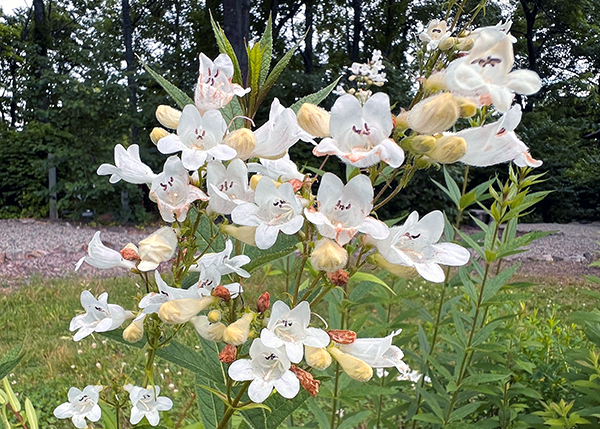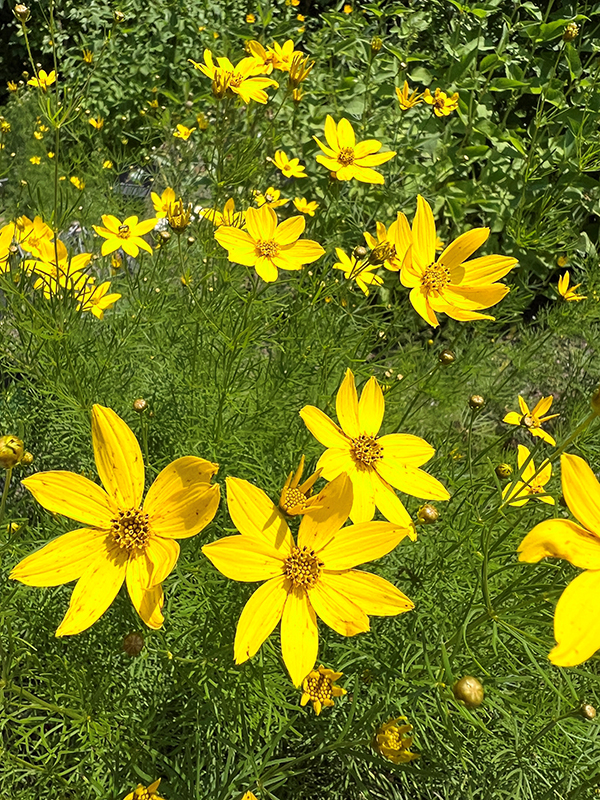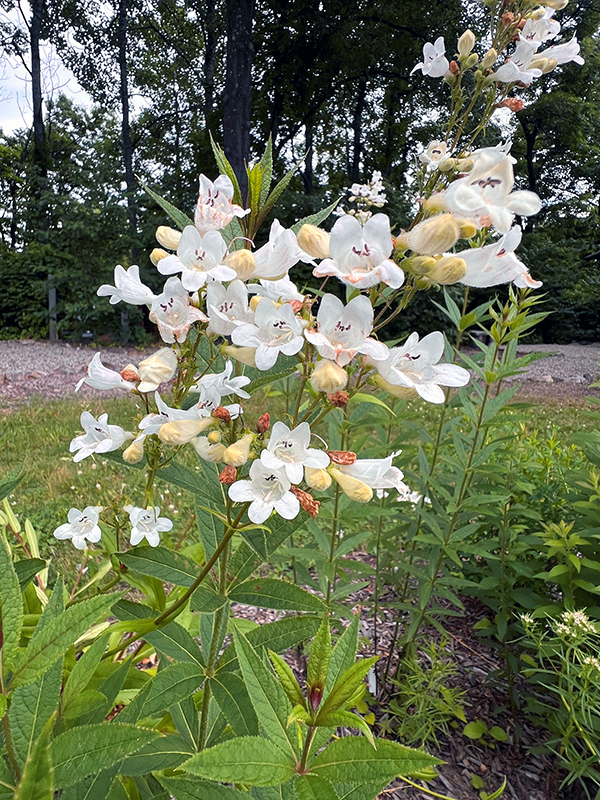
June 21, 2024| Education, Environment
By: Laurie Kane
With the arrival of summer, our garden is brimming with color as new varieties continue to bloom each week. Once established, native plants generally thrive despite high heat and humidity, unlike non-native species, which tend to go dormant until growing conditions improve. Additionally, native plants offer many environmental benefits, such as conserving water and eliminating the need for fertilizer.
Threadleaf coreopsis or whorled tickseed (Coreopsis verticillata) is considered one of the easiest native plants to grow. It is deer resistant, thrives in full sun to partial shade, and adapts to both dry and wet conditions. The cheery bright yellow, daisy-like flowers attract butterflies.
 |
 |
| Threadleaf Coreopsis | Foxglove Beardtongue |
Foxglove beardtongue or foxglove penstemon (Penstemon digitalis) has distinct tall stems with clusters of bell-shaped white flowers from late spring to midsummer followed by small capsules that often turn red into early fall. The flowers attract bees and hummingbirds. Native Americans used this plant to treat a number of ailments including colds, coughs, consumption, snakebite, and toothache.
Stop by our gardens at 125 Landing Road to enjoy the view! You might even be inspired to add some of these beautiful, low-maintenance, wildlife-friendly plants to your home garden.

August 02, 2024
Education, Environment

August 15, 2024
Education, Environment